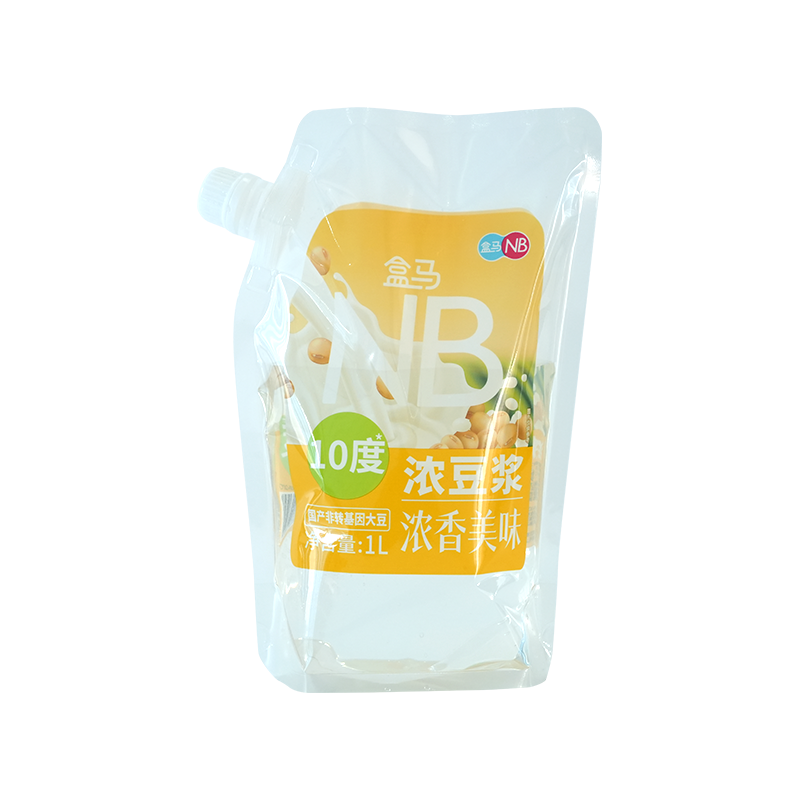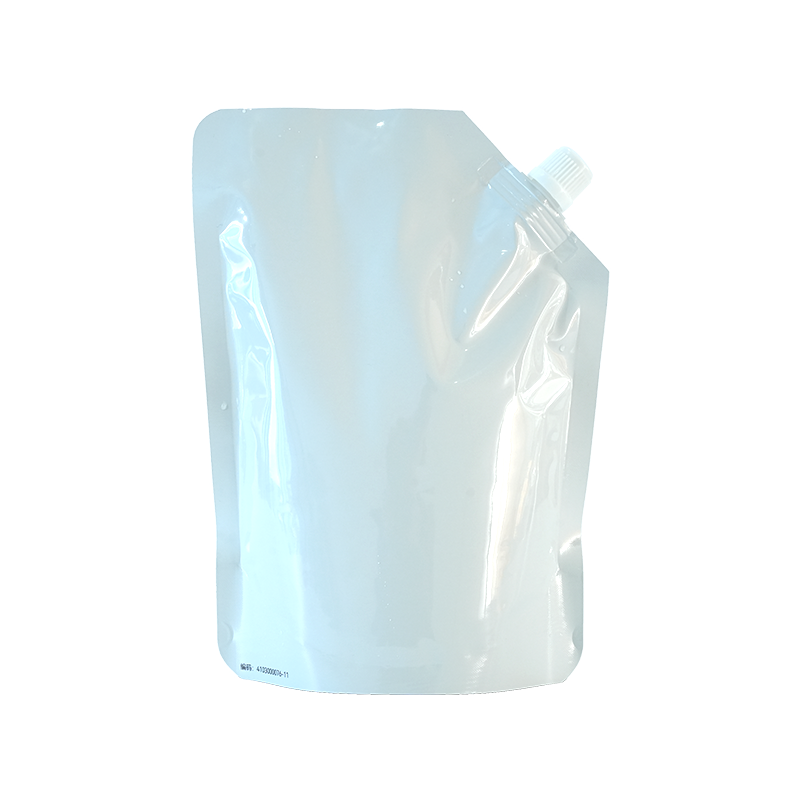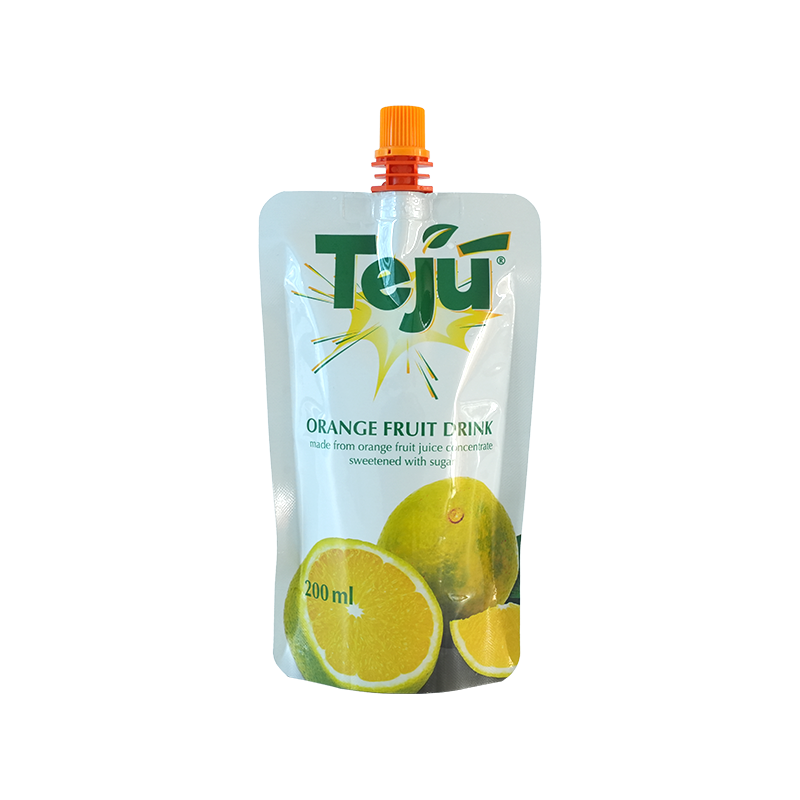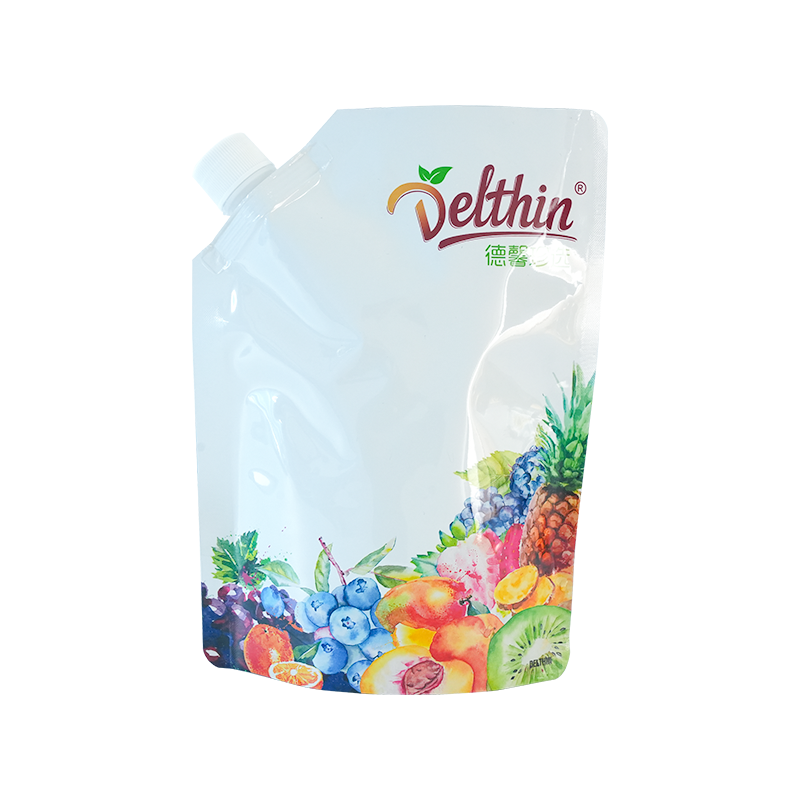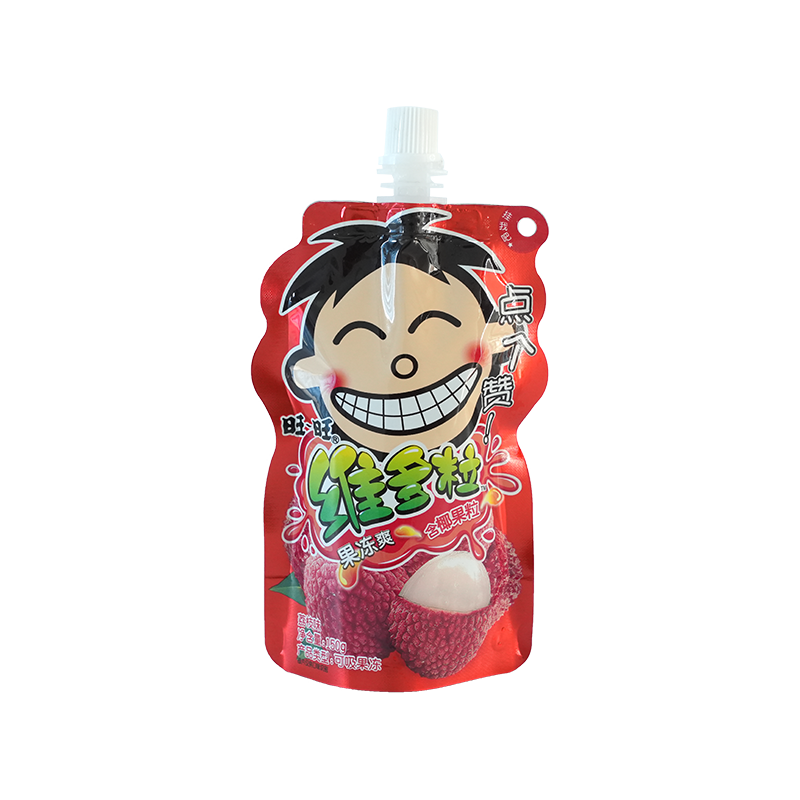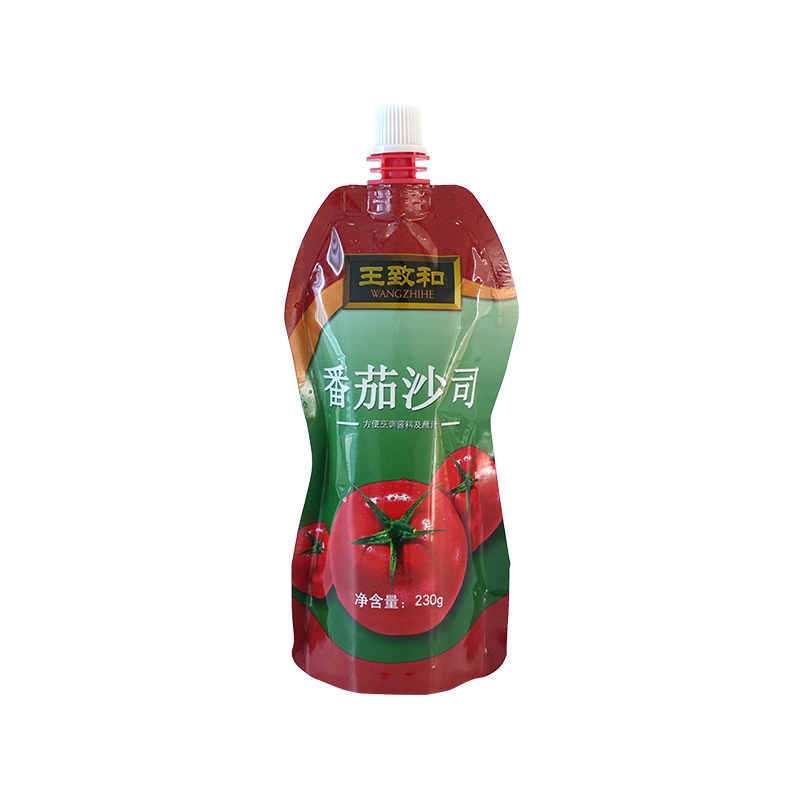In the competitive world of beverage packaging, the container is far more than a mere vessel; it is a critical component of product integrity, brand identity, and consumer satisfaction. For manufacturers of viscous and creamy products like milkshakes, the choice of packaging is paramount. The gravure printing 177ml milkshake stand-up bag has emerged as a premier solution, combining functional excellence with superior aesthetic appeal. However, the true quality of such a pouch is not immediately visible to the end consumer.
The Fundamental Structure: Understanding Multi-Layer Laminates
A stand-up pouch is never made from a single layer of plastic. The performance requirements for a product like a milkshake are far too demanding for any monolithic film to handle. Instead, high-quality pouches are engineered using sophisticated multi-layer laminates. Each layer within this structure is co-extruded or laminated together to perform a specific, dedicated function, creating a synergistic whole that is greater than the sum of its parts. The typical structure for a gravure printing 177ml milkshake stand-up bag involves a minimum of three distinct layers, though more complex structures with four or five layers are common for premium applications.
The outermost layer is primarily responsible for aesthetics and durability. This is the substrate that undergoes the gravure printing process, accepting the intricate and vibrant inks that create the brand’s visual identity. It must have excellent surface properties to ensure high-quality print reproduction and be tough enough to resist scuffing, abrasion, and general wear and tear during handling, transportation, and on the retail shelf. Common materials for this layer include polyester (PET) and nylon (BOPA), chosen for their tensile strength, clarity, and superior ink adhesion.
Sandwiched in the middle is the core barrier layer. This is the heart of the package’s protective functionality. Its sole purpose is to prevent the transmission of external elements that could degrade the product. For a milkshake, the most critical threats are oxygen and light. The barrier layer is, therefore, designed to be highly impermeable to these gases and to act as an effective light barrier, often through the use of metallization or incorporation of specific pigments. A material like aluminum foil (AL) provides an nearly absolute barrier, while metallized polyester (MET PET) or ethylene vinyl alcohol (EVOH) offer excellent barrier properties with greater flexibility and cost-effectiveness for certain applications. The selection of this central layer is one of the most crucial decisions in specifying the material for a gravure printing 177ml milkshake stand-up bag.
The innermost layer, known as the sealing layer, is in direct contact with the product. Its properties are vital for food safety, packaging integrity, and the filling process. This layer must be made from food-grade materials that are safe for direct contact with consumable products and exhibit strong heat-sealability. During the filling process, the edges of the pouch are heat-sealed to create a hermetic closure, and this seal must be strong enough to withstand internal pressures and prevent leaks. Furthermore, the seal must be consistent and easy to achieve at high speeds on automated filling equipment. Polyethylene (PE) is the most common choice for this layer, with variations like Linear Low-Density Polyethylene (LLDPE) being prized for its seal strength, clarity, and flexibility.
Critical Barrier Properties for Milkshake Preservation
The primary purpose of any food package is to preserve the contents and extend its shelf life. For a gravure printing 177ml milkshake stand-up bag, this involves creating a robust defense against several specific spoilage mechanisms. The material specifications must explicitly address each of these threats through measurable barrier properties.
Oxygen Barrier (OTR): Oxygen is the chief enemy of dairy products. It facilitates the growth of aerobic bacteria and molds and leads to oxidation, which causes rancidity and off-flavors in the fats and oils present in milkshakes. Therefore, the oxygen transmission rate (OTR), measured in cm³/m² per day, is a non-negotiable specification. A high-quality pouch will have an exceptionally low OTR, indicating that very little oxygen can pass through the material over a 24-hour period. This is achieved through the central barrier layer, whether it is foil, metallized film, or a high-barrier polymer like EVOH. The required OTR level will be determined by the desired shelf life; a longer shelf life demands a lower, more protective OTR value. Buyers should always request OTR data from their material suppliers to ensure it meets the requirements for their specific product.
Water Vapor Barrier (WVTR): While milkshakes have high water activity, protecting them from losing or gaining moisture is still important. Moisture loss can lead to changes in viscosity and texture, thickening the product, while moisture gain could potentially dilute it or affect other properties. The water vapor transmission rate (WVTR), measured in g/m² per day, indicates the material’s resistance to the passage of water vapor. A low WVTR is desirable to maintain the product’s original consistency and weight throughout its shelf life. Materials like polyethylene provide good moisture barriers, and when combined with foil, the WVTR becomes virtually zero.
Light Barrier: Light, particularly ultraviolet (UV) light, can have a severely detrimental effect on dairy products. It can catalyze photo-oxidation, destroying sensitive vitamins (like riboflavin) and causing “lightstruck” off-flavors that are highly unpleasant. An opaque material is, therefore, a key specification for a gravure printing 177ml milkshake stand-up bag. This is most effectively accomplished by using an aluminum foil layer or a heavily pigmented white layer, often in the sealant web. This opacity not only protects the product but also provides a brilliant, consistent white background for the gravure printing process, ensuring that the printed colors appear vibrant and true to design.
Aroma Barrier: A milkshake’s flavor profile is complex and delicate. The material must prevent the outward migration of these flavor compounds (scalping) to maintain the product’s taste. Simultaneously, it must block external odors from permeating the package and contaminating the product. This requires a material with an excellent aroma barrier, a property intrinsically linked to its oxygen and moisture barrier performance. A well-chosen laminate structure will effectively lock aromas in and keep foreign odors out.
The Sealing Layer: Ensuring Integrity and Safety
The innermost sealing layer is the final guardian of product quality. Its specifications are directly tied to the safety of the consumer and the operational efficiency of the filling process. The choice of material here is critical.
Food-Grade Compliance and Safety: The most fundamental specification is that the sealing layer must be manufactured from food-grade materials that are fully compliant with all relevant food contact regulations in the intended market. This ensures that no harmful substances migrate from the packaging into the food product. Certificates of Compliance should be available from the material supplier upon request. Furthermore, the material should be odorless and not impart any taint to the product, preserving the milkshake’s pure flavor.
Heat Seal Strength and Performance: The integrity of the package hinges on the strength and reliability of the heat seals along the side and top of the pouch. The sealing layer must have excellent heat seal performance, characterized by a wide sealing window. This means the temperature range at which it forms a strong, consistent seal is broad, making the filling process more forgiving and reducing the risk of leakers on the production line. The ultimate seal strength must be high enough to withstand the internal pressure of the product, particularly during transportation and handling, without failing. A weak seal will lead to product loss, mess, and consumer complaints.
Seal Integrity and Leak Prevention: Beyond sheer strength, the seal must be consistent and free from channels or weak spots. The material must have good hot tack strength—this is the strength of the seal while it is still hot and directly after the jaws of the sealing machine release it. A material with poor hot tack can cause the seal to pull apart under the weight of the product before it has fully cooled and crystallized, leading to failures on the fast-moving production line. For a liquid product like a milkshake, this property is indispensable.
Material Specifications for Optimal Gravure Printing
The term gravure printing refers to an intaglio printing process where the image is engraved into a printing cylinder. This method is renowned for its ability to produce exceptionally high-quality, consistent, and vibrant images, making it ideal for premium packaging. However, not all materials are equally suited to this process. The outer layer of the laminate must possess specific characteristics to accept gravure printing effectively.
Surface Energy and Treatability: For inks and coatings to properly adhere to a plastic film, the surface energy of the film must be higher than the surface tension of the ink. Most polymer films, like PET and OPP, have naturally low surface energy and require a pre-treatment to make them receptive to printing. A key specification is the dyne level, a measure of surface energy. Films are often corona or flame treated to raise their dyne level to a point (typically between 38-44 dynes/cm) that ensures excellent ink adhesion and prevents the printed image from cracking, flaking, or rubbing off during handling. A buyer should ensure that the material supplier guarantees a stable and adequate surface treatment level for the intended printing process.
Smoothness and Uniformity: The gravure process involves transferring ink from tiny engraved cells on a cylinder directly onto the substrate. To achieve a sharp, high-resolution image, the surface of the film must be extremely smooth and uniform. Any surface irregularities, gels, or imperfections will prevent consistent contact with the printing cylinder, resulting in a flawed print with missing dots or uneven color. Specifications regarding surface roughness and the absence of defects are critical for achieving the high-end aesthetic that gravure printing is known for.
Opacity and Whiteness: As previously mentioned, the need for a light barrier often dictates the use of opaque materials. From a printing perspective, this opacity is a benefit. It provides a consistent, non-transparent background that allows for vibrant, opaque inks to be used. Many high-quality gravure printing 177ml milkshake stand-up bag products are built on a white opaque background layer. This whiteness enhances the brilliance and color fidelity of the printed design, making reds redder and blues deeper. The specification of whiteness index and opacity percentage for the base film will directly impact the visual quality of the final printed pouch.
Functional Additives and Sustainability Considerations
Modern packaging materials often include additives engineered into the polymer resins to enhance performance. For a milkshake pouch, antiblocking agents are incorporated to prevent the inner layers of the film from sticking together during storage or on the filling line, ensuring the pouches open easily for filling. Slip agents are added to the sealing layer to reduce the coefficient of friction, allowing the flat pouches to move smoothly through high-speed filling and packaging machinery without jamming.
Furthermore, the industry is increasingly focused on sustainable packaging solutions. While traditional multi-material laminates pose recycling challenges, new developments are emerging. Buyers can now inquire about structures that incorporate recycled content (where food-grade compliance allows) or use mono-material structures, such as those based entirely on polyolefins like PE and PP, which are more easily recyclable. Another area of development is the use of high-barrier coatings as an alternative to non-recyclable layers. While the classic gravure printing 177ml milkshake stand-up bag may use traditional laminates, understanding the available options for reducing environmental impact is becoming a crucial part of the material specification conversation.

